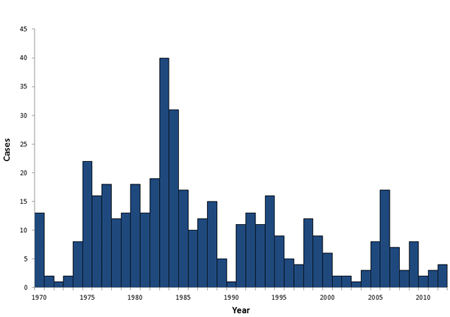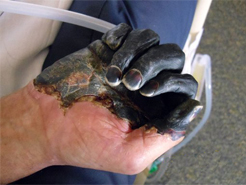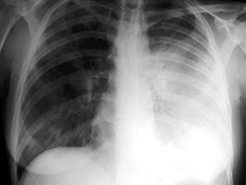Transmission
Scientists think that plague bacteria circulate at low rates within populations of certain rodents without causing excessive rodent die-off. These infected animals and their fleas serve as long-term reservoirs for the bacteria.
Infection of human beings most often occurs when a person is bitten by an infected flea that has fed on an infected rodent. Transmission of Y. pestis to an uninfected individual is also possible by any of the following means.
- droplet contact - coughing or sneezing on another person
- direct physical contact - touching an infected person, including sexual contact
- indirect contact - usually by touching soil contamination or a contaminated surface
- airborne transmission - if the microorganism can remain in the air for long periods
- fecal-oral transmission - usually from contaminated food or water sources
- vector borne transmission - carried by insects or other animals.
Risk factors for plague include a recent flea bite and exposure to rodents, especially rabbits, squirrels, or prairie dogs, or scratches or bites from infected domestic cats. Cats are particularly susceptible to plague, and can be infected by eating infected rodents. Sick cats pose a risk of transmitting infectious plague droplets to their owners or to veterinarians. Several cases of human plague have occurred in the United States in recent decades as a result of contact with infected cats.
Signs and Symptoms
Bubonic plague is the most common variety of the disease. Bubonic plague becomes evident three to eight days after the infection. If untreated, the rate of mortality for bubonic plague is 50-90 percent
Bubonic plague symptoms appear suddenly, usually after 2 to 5 days of exposure to the bacteria. Symptoms include:
Septicemic plague occurs when plague bacteria multiply in your bloodstream. Untreated septicemic plague is universally fatal, but early treatment with antibiotics reduces the mortality rate to between 4 and 15 percent. People who die from this form of plague often die on the same day symptoms first appear.
Pneumonic plague affects the lungs. It's the least common variety of plague but the most dangerous, because it can be spread from person to person via cough droplets. The incubation period for pneumonic plague is usually between two and four days, but can be as little as a few hours. Without diagnosis and treatment, the infection can be fatal in one to six days; mortality in untreated cases may be as high as 95 percent. Pneumonic plague induces coughing and is very infectious.
Treatment
People potentially infected with the plague need immediate treatment and should be given antibiotics within 24 hours of the first symptoms to prevent death. Other treatments include oxygen, intravenous fluids, and respiratory support. People who have had contact with anyone infected by pneumonic plague are given prophylactic antibiotics. Using the broad-based antibiotic streptomycin has proven to be dramatically successful against the bubonic plague within 12 hours of infection.
Several classes of antibiotics are effective in treating bubonic plague. The traditional treatments are:
- Streptomycin 30 mg/kg intramuscular twice daily for 7 days
- Chloramphenicol 25-30 mg/kg single dose, followed by 12.5-15 mg/kg four times daily.
- Tetracycline 2 g single dose, followed by 500 mg four times daily for 7-10 days (not suitable for children)
More recently
- Gentamicin 2.5 mg/kg intravenous or intramuscular twice daily for 7 days
- Doxycycline 100 mg (adults) or 2.2 mg/kg (children) orally twice daily have also been shown to be effective.
Vaccination
The plague vaccine is no longer used in the United States. New plague vaccines are in development but are not expected to be commercially available in the immediate future.
Plague in the United States
The last urban plague epidemic in the United States occurred in Los Angeles from 1924 through 1925. Plague then spread from urban rats to rural rodent species, and became entrenched in many areas of the western United States. Since that time, plague has occurred as scattered cases in rural areas. Most human cases in the United States occur in two regions:
- Northern New Mexico, northern Arizona, and southern Colorado
- California, southern Oregon, and far western Nevada


Plague cases in the United States, 1970-2012. Since the mid-20th century, plague in the United States has typically occurred in the rural West.
Prevention
Rat control and watching for the disease in the wild rodent population are the main measures used to control the risk of epidemics. Reduce rodent habitat around your home, work place, and recreational areas. Remove brush, rock piles, junk, cluttered firewood, and possible rodent food supplies, such as pet and wild animal food. Make your home and outbuildings rodent-proof.
Keep fleas off of your pets by applying flea control products. Animals that roam freely are more likely to come in contact with plague infected animals or fleas and could bring them into homes. If your pet becomes sick, seek care from a veterinarian as soon as possible.




